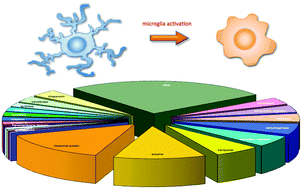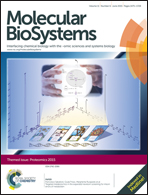Abstract
Microglia are resident macrophages in the central nervous system, whose participation against exogenous injuries and infections is mainly marked by an immediate release of inflammatory cytokines along with a toxic efflux of superoxide radicals. Indeed, many lines of evidence indicate that persistent activation of these cells turns their neuroprotective phenotype into a neurotoxic one, which contributes to destroy neuronal activity and induces neuronal loss in several neurodegeneration processes, such as Alzheimer's disease. In this study we attempted to fill-in the gap in our knowledge about redox regulation of amyloid activated microglia. With this aim, we carried out a robust and comprehensive characterization of the reversibly redox modified proteome both at the level of resting and amyloid-activated BV2 cells, an immortalised cell line of murine microglia. The approach we used combined the selective enrichment of reversible redox modified proteins through a biotin bait with nanoscale liquid chromatography tandem mass spectrometry of their proteolytic peptides. By this reliable approach, we identified 60 proteins changing the redox status of their selective cysteine residues upon treatment with the amyloidogenic Aβ25–35 peptide. These results assessed that in microglia stimulated by amyloids, redox modifications of the proteome specifically target proteins involved in crucial cell processes, i.e. those involved in the protein synthesis. In particular, for peroxiredoxin-6 (Prdx6) and Ras-related C3 botulinum toxin substrate 1 (Rac1) we suggest mechanisms through which reversible redox modifications could affect the peculiar role of microglia in amyloidogenic injury, which at the same time reinforce the oxidative burst and resist toward it. Moreover, the redox modulation we observed on chloride intracellular channel protein 1 (CLIC1) strengthens the structural and functional relationship between the oxidative stress and the metamorphic transition of this protein from a soluble form to an integral membrane form. The redox signatures we determined might also provide neurologists with more specific and reliable biomarkers to distinguish the diverse microglia status in neurodegeneration and then to drive targeted drug design.

- This article is part of the themed collection: Proteomics

 Please wait while we load your content...
Please wait while we load your content...